Mixing Art And Sound: Dylan Morris

Experimental and visually explosive, a variety of mediums map out Dylan Morris’ interests as a painter. His images pack a punch with the colors, textures, and patterns that he plays with. Morris combines different materials – visual narratives – like worn books and unwanted scraps of paper, sources from the corner store aisles. The goal is to tell a story divergent from its original matter, which he does with every work.
Morris did not naturally reach this height of success. He was undecided about what he wanted to do with his life until locking himself in a shed, literally, with paint and drums. He’s currently studying at the Camberwell College of Arts (London) for his Fine Art degree. First a passionate musician, Morris explores the relationship between visual art and sound. Such stylings were most recently seen in a group show, Arcadia, at the Greatorex Street Gallery in Whitechapel this past June.
We are pleased to present Dylan Morris for ARTRUNNER.
(This interview has been edited for clarity and length.)
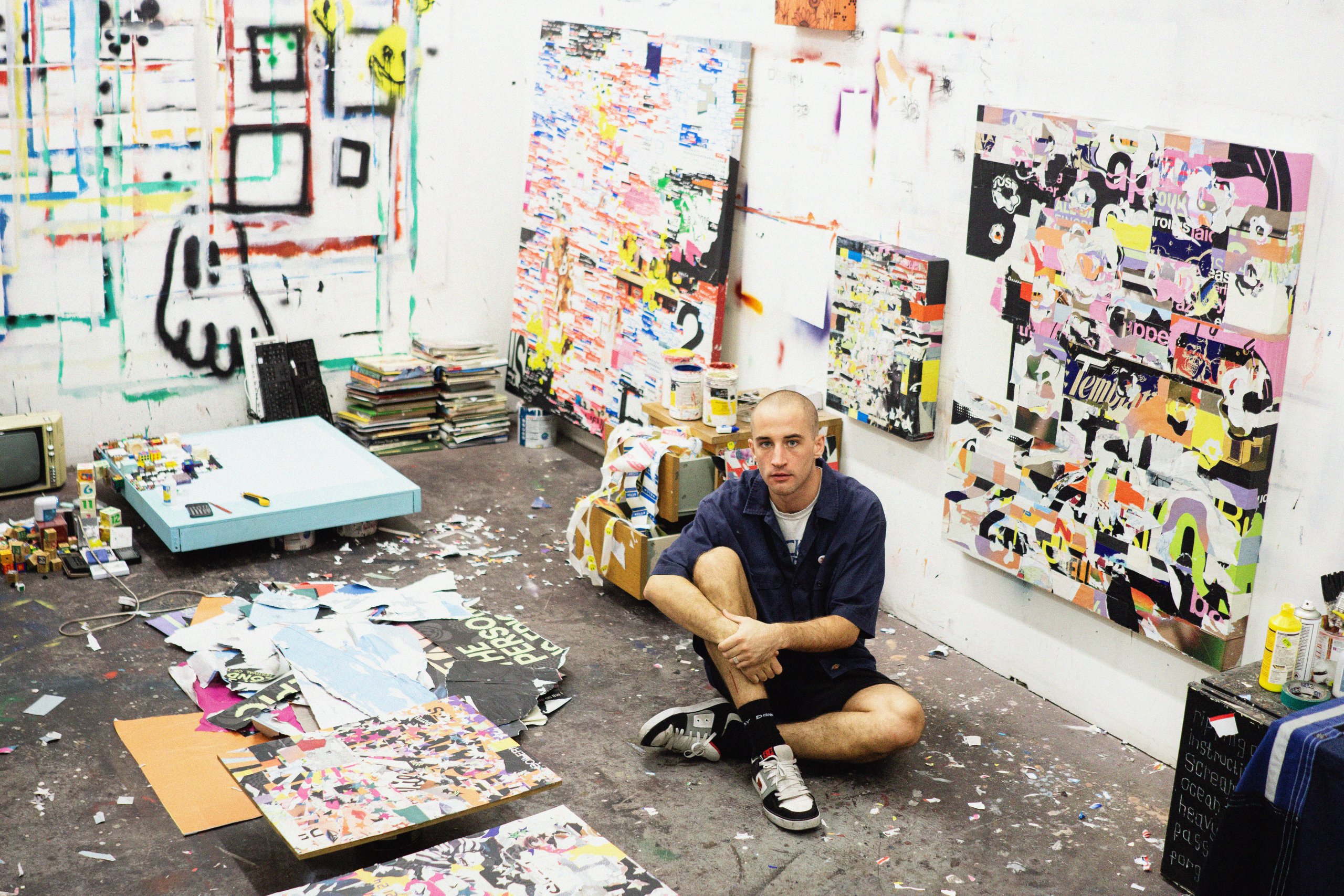
Photo courtesy of the artist
How would you describe your work to a lay person?
My work is a form of collage that resembles abstract, expressionist painting. I make physical, 2-D images that blend together colors, patterns, textures and images into energetic and aggressive compositions. Instead of paint, I mainly use paper. I find and drag back to the studio different billboard posters, books, magazines, street ephemera and miscellaneous paper products such as stickers, receipts and raffle tickets. I enjoy the process of scouring the streets, rummaging through piles of unwanted books and through the aisles of discount shops to find all the right elements: vivid, nuanced color, absorbing patterns and evocative, engaging images. I enjoy taking physical materials that have their own narrative, their own history and meaning and somehow manipulating and rearranging them to communicate something personal. I layer, then cut, then peel away at the materials to weave together the different elements involved on the different pieces of paper I find. The process is almost entirely improvisational. I try to follow my instincts as directly as I can to arrive at something close to the pictures formulating in my head.
I’m currently interested in reflecting on the overabundance of media, the superficiality of online content and the increasingly pervasive sense of materialism in culture. I want to try and abstract the ubiquitous digital realm of adverts, pop ups, pixels, reels, apps and tabs and then tear away at it or dissect it to find my own sense of catharsis over it. Growing up in an age of increasingly immediate and overwhelming digital culture, I find it therapeutic to take certain elements of this culture and then incorporate them in a gradual, physical and detail intensive practice where I have the power to manipulate and distort them. This I think allows me to gain a sense of agency over a culture of perpetual, dizzying stimulation and I hope that those who see my work can feel a semblance of this cathartic release.
When and where did your creative journey begin?
I left school in 2016 and enrolled in a Politics and Philosophy degree at The University of Edinburgh. I was a nervous wreck when I turned up and quietly trudged through a pretty stiff set of academic units, seminars, and exams for a year. I was turned off by the joyless, uninspired style of university education and I felt some kind of burning desire to break out of its rigid structures and do something that spoke to me. Before I dropped out and moved home, I had built some meaningful relationships with a group of students who helped open my eyes and ears to more challenging films, art and music. I think these experiences re-ignited a creative spark that I hadn’t felt since I was much younger. Those kind of people are very important. When I moved home, I began to nurture little embers. I locked myself away in my parents’ garden shed with a drum kit, painting supplies, a solid Internet connection, and set myself loose. A few months later, I’d smashed up the drum kit, covered the floor and walls in paint, and made designs to go to art school, join a band, and try to formulate some kind of career path in the arts. I still need to put the band together.
What type of work, or other kinds of media, were you interested in when you started working as an artist?
When I started out, my passion and appreciation for fine art was quite limited. I grew up playing a lot of sports and going to a school where there was a very limited appreciation for the arts in general. I had always been visually stimulated and loved films, but I would have to say that it was music that inspired me to start somehow expressing myself. I left school and felt quite strongly that I didn’t know who I was or what I wanted from life. Through this period I was broadening my horizons musically and became attached to anything that was, as I felt I couldn’t be, unapologetically itself. I idolised musicians with total honesty and made music that seemed to be almost uncontrollably spilling out from something inside of them. Through the Internet, I delved into the early ‘punk’ movements of the late 70s and early 80s (more specifically the L.A. punk scene), and revealed the personalities and the ideas expressed by a lot of the musicians of the time.
You can take simple, unrefined equipment, apply rudimentary skills, and if you have enough passion, commitment, and something of substance to say, then you can make meaningful, palpable art. I liked the open-minded, forward-thinking approach and egalitarian ideals of these musicians and the fact that they weren’t forty feet in the air, inflated by giant egos. It didn’t matter who I was or the fact that I had very little artistic skill or knowledge; I could still at least try express myself. I wanted and needed to try and carve out a sense of self as a way of finding direction in life. I wanted to emulate these musicians and thought that I could trust my taste and visual faculties to create something physical that imitated their music. I had no idea at the time that it would potentially lead a career, but to this day music plays a powerful role in instructing my art and informing my visual language.
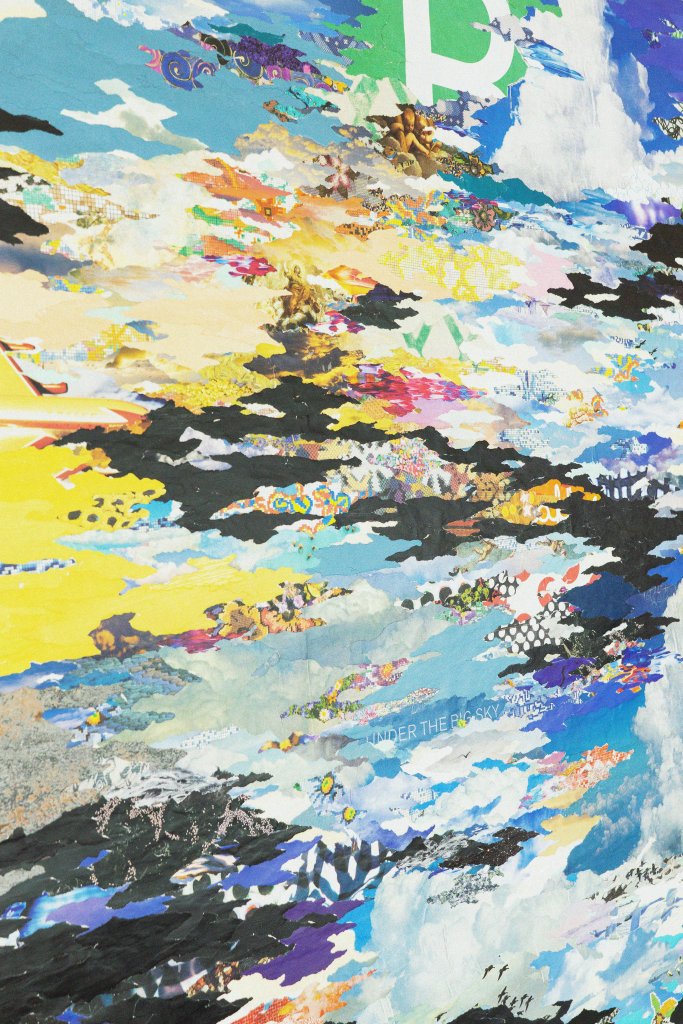
Big Beautiful Blue Sky
Paper collage on wood
113 x 110 cm
Courtesy of the Artist
How have you changed since you started?
Both my approach and process have changed, drastically. I’d like to think that my practice has become more considered, my use of materials matured and my interaction with concepts expanded. Even when I started doing shows, I wouldn’t have aspired to be called a professional. In retrospect, I was a highly enthusiastic hobbyist. I was too cynical and wrapped up in my wannabe-punk-painter phase to fully consider my future. I’m currently studying Fine Art at the Camberwell College of Arts in London, and studying has done a great deal for me. It’s forced me to realize that if I want to carve out a career for myself as an independent artist, I have to fully dedicate myself to the craft, to always keep working, and to continually move forward. I realised the importance of criticism, to critique myself and my work, and to be open to and encourage the critique of others. I have to remove myself and my sense of pride from the art in order to get the work out there into the world and let it have its own life.
In a more general sense, the process has taught me a lot about myself, the things that affect me and what it is I want to say. I’m glad to say it gave me the confidence to be myself, in and outside of the studio. Art has made me a calmer, more open-minded, and generous person. I always remind myself to consume and appreciate art, music, films and other facets of culture that are themselves challenging, even discomforting. This is an effective way you can evolve as a person and as an artist.
What are your upcoming projects?
I recently organised, curated and had shown work in a group show at an artist-run project space called Greatorex Street in Whitechapel (London). Arcadia brought together nine artists from a mix of disciplines, and hosted three genre-spanning bands that played surrounded by the sporadic curation of diverse artwork. It was an attempt to oppose the superficial values of online art culture and an often ego-centric, commercial, image-based approach to the presentation and celebration of the arts. We tried marrying the mediums of fine art and music to create an atmosphere that was equally as conceptual as it was immediate and sensory. We tried to realise a volume and a sense of good-natured aggression that I think is often missing in London’s fine art culture. I want to develop these concepts and, hopefully, continue to curate and organise shows in perhaps less traditional, more accessible spaces. I think events like these are important in broadening people’s appreciation. In October, I will be showing work with Mess Collective, a group of artists and performers who also seek these ideas, in our second event of art and live performance in a vacant warehouse space in Shoreditch.
How does this body of work fit into the larger framework of your career?
An artist is lucky if they can find a material or process that feels natural to work with and eliminates as much space as possible between them and their vision. If found, the relationship between the artist and that process has to be explored in its entirety. I feel I’ve found that with paper and with collage. Making this current body of work has been an exciting first few months in a maturing relationship with this process. It’s clarified to me my strengths and weaknesses as an artist and given me a more acute sense of direction going forward with my practice. I’ve always been frustrated with the endless racks of varying expensive paints, pastels, pencils, brushes, varnishes, gels and dilutents. There are an infinite amount of techniques and tools you can apply to painting and drawing to make your images look one of a million different ways. This doesn’t interest me, it even frightens me. I can work a lot more freely if my visual elements come pre-made. My job then is to arrange, rearrange, distort and weave these elements together. Something about the way things appear on paper, the way the layering and ripping away of paper reveal certain hidden textures and forms and the way this all feels in my hands feels more natural than anything I’ve experienced before.
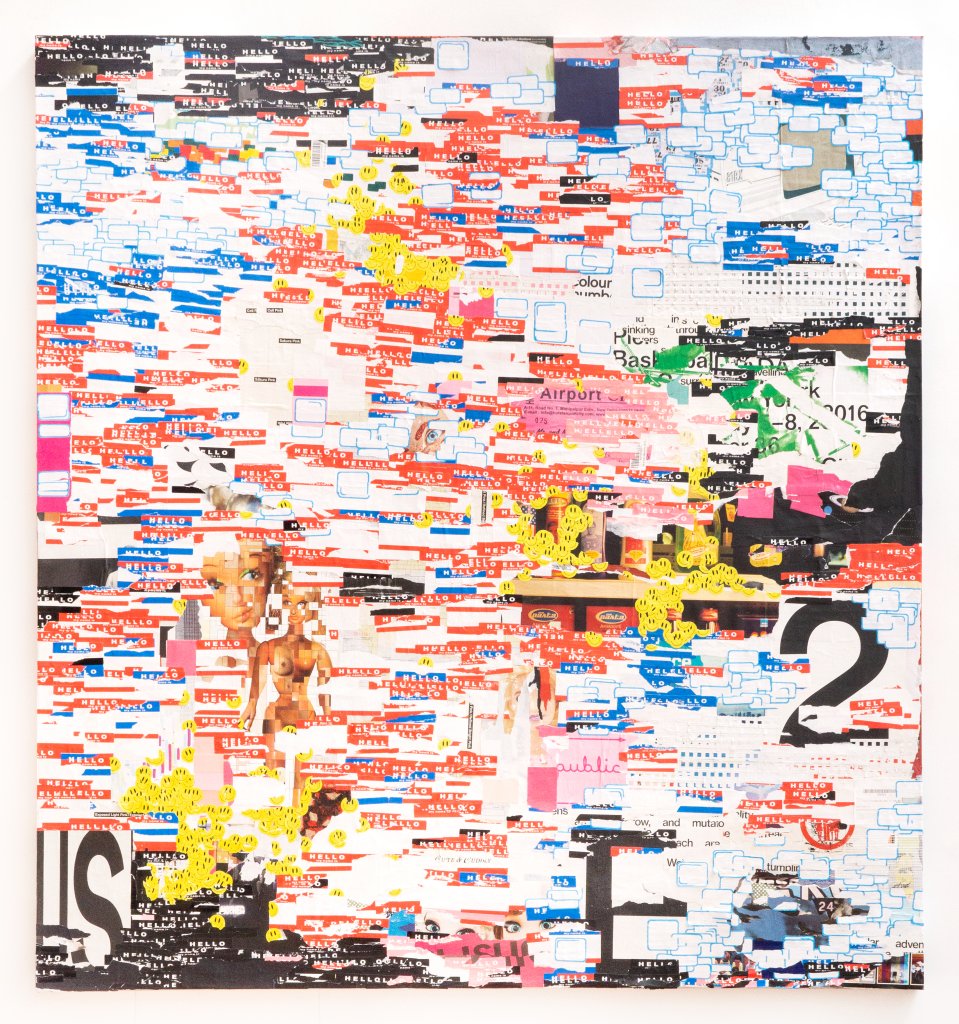
Multiple Tab Melting Procedure
155 x 140 cm
Courtesy of the Artist
How do you see yourself evolving?
As I move through my degree, an enthusiasm for abstraction has flourished and instilled in me certain values that I use to try and mature my practice. A recent essay I wrote explored the life and work of American visual artist Mark Bradford and his expansive and cultured approach to materials. He often talks of the his passion for language and the way in which abstraction gives him the freedom to formulate a more sophisticated, engaging visual language. He says that language is just as much about what you reveal as it is about what you choose not to reveal. I’ve realised that I can’t say everything at once, even if I want to. It’s not an effective or sophisticated way of forming a visual language. I’m learning how to restrain myself from engaging in the visual equivalent of rambling, uncontrollably. I’m learning to be brave enough leave space, to obscure certain elements, and open up room for more interesting textures and shapes to do the talking for me. I want to develop my relationship with abstraction and create more nuanced, refined images that intentionally conceal particular messages and ideas in the work. There is value in subtle, intricate languages in visual art. I try to remind myself to be willing to sacrifice, disguise and bury the attractive elements that pop up through the making process in service of a more sophisticated and absorbing final image.
What are seven things you must have while working in the studio?
- Wheat paste: for all my gluing and sticking needs.
- Paper: a constantly evolving pile of it surrounding me at all times.
- Brush: paste on brush, brush on paper.
- Blade: box cutters or precision blades, for getting under the surface and finding those hidden shapes and textures.
- Music: whatever feels appropriate, at all times.
- Laptop: Something in the background to help me switch off and follow my instincts, the news, cartoons.
- Water: hydration is key.



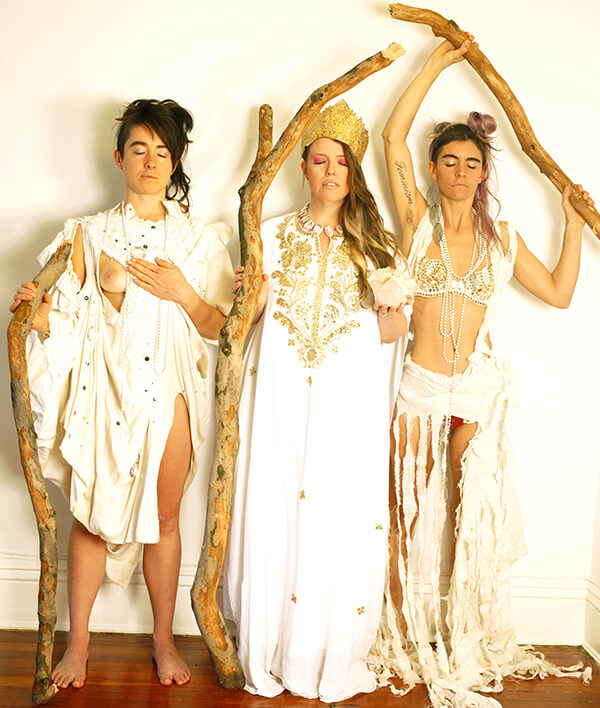

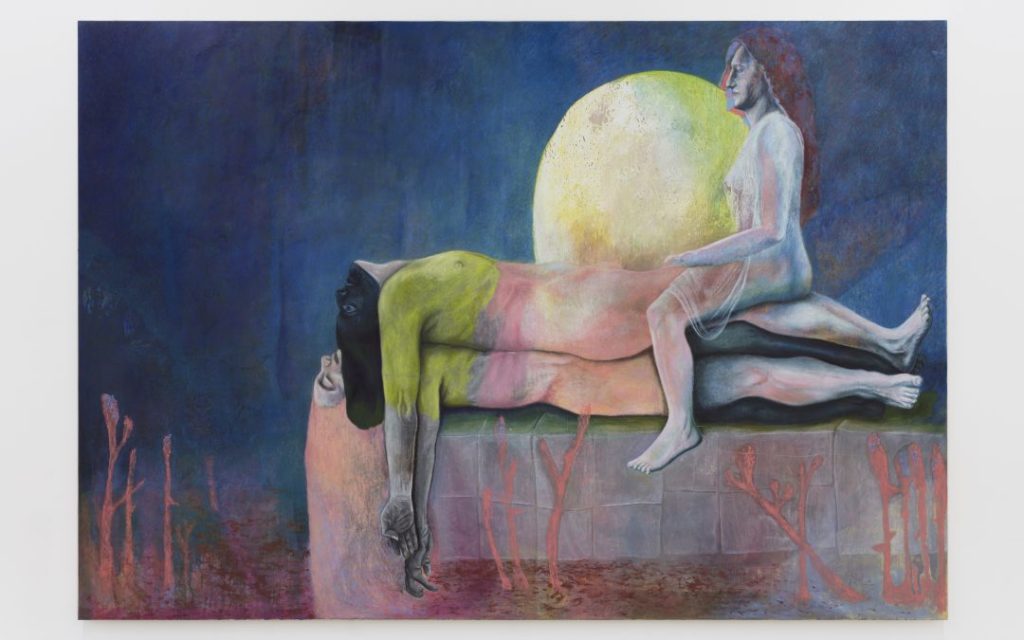
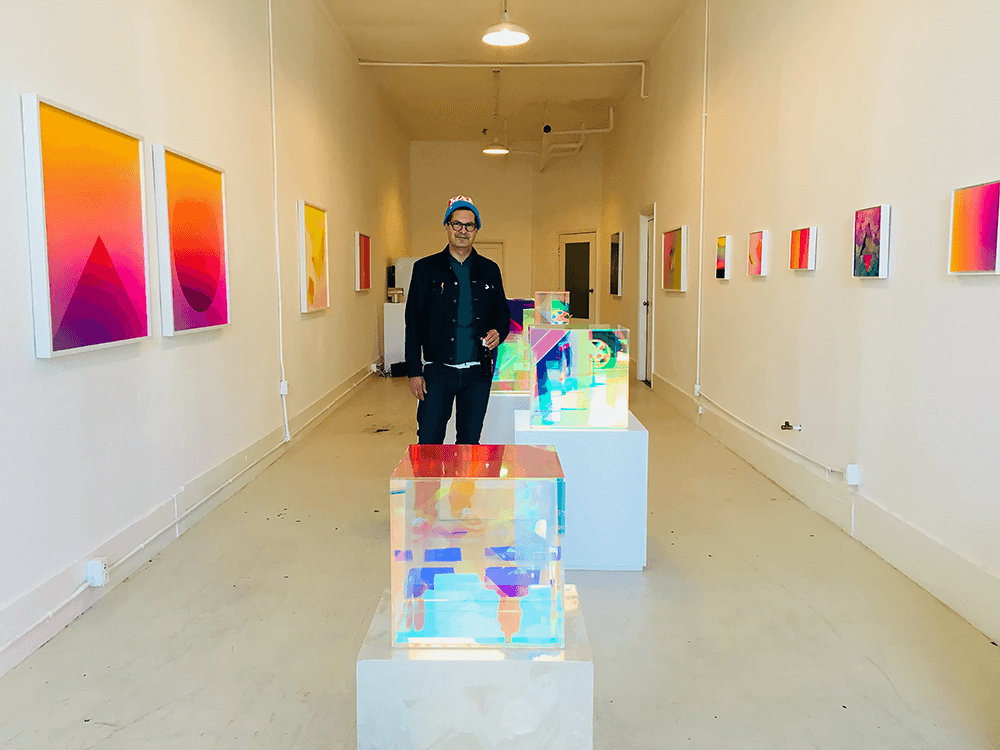

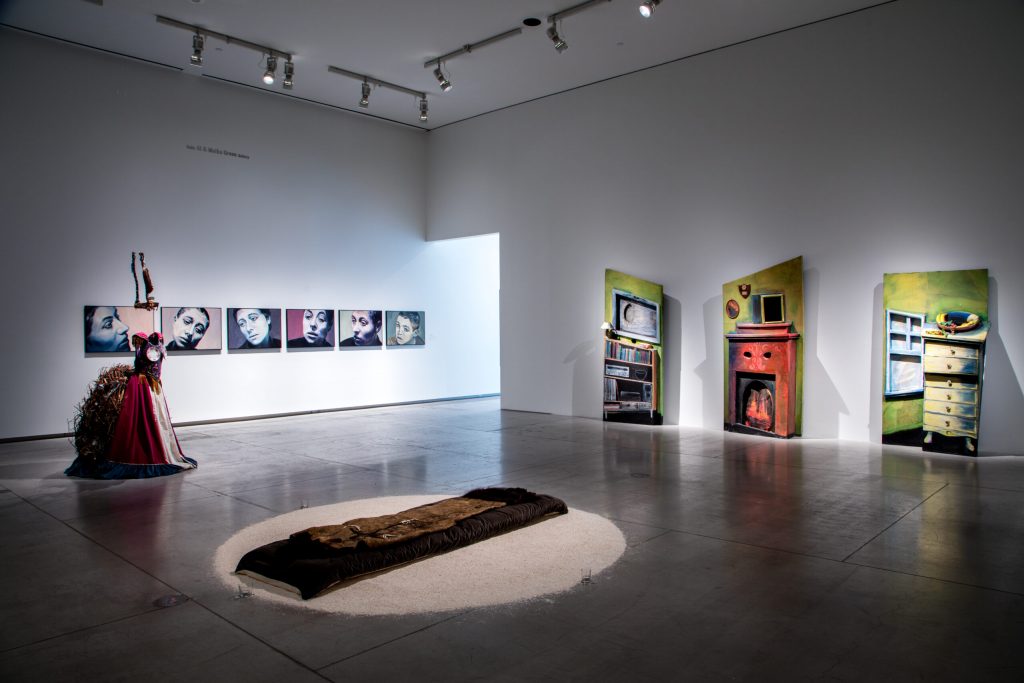
Responses